Graphics tablet market is growing at a good pace and is expected to reach USD991.86 million by 2028 from estimated USD536.25 million in 2022 as per reports. As the demand is rising, more players are entering the same market with better features and specs.
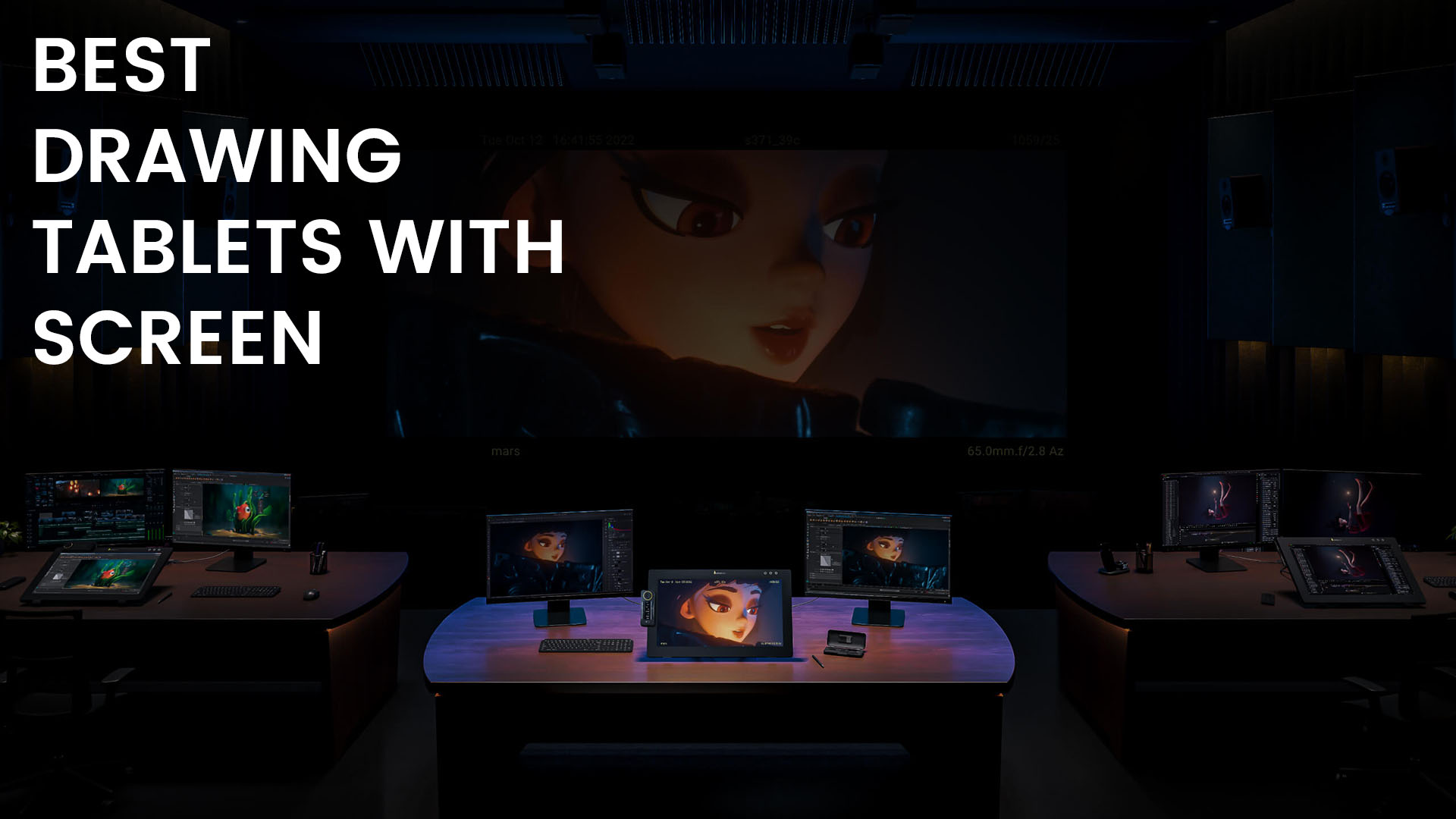
If we talk about drawing tablets, they can be categorized as;
- Drawing Tablet Without Screen (Pen Tablet)
- Drawing Tablet With Screen (Pen Display)
- Standalone Drawing Tablet (Pen Computer)
Let’s discuss them in brief. So, the first one are the drawing tablets without screen, the most basic ones for beginners and starts from as low as $40 and goes up to $500(Wacom Intuos Pro Large). The third one (explaining second one in detail below) are the standalone drawing tablets – can also be called as drawing computers. They don’t require a computer (as the name says, STAND-ALONE) and you can carry it alone anywhere to create designs.
Coming to the second one i.e. drawing tablets with screen, also called as pen displays are the graphics tablets with display but still they require a computer to get started. In short, you can see the computer screen on tablet and create graphics more precisely and easily. In this article, we’ll be discussing some of the best drawing tablets with screen, their specs and more details.
Top Players in Graphics Tablet
Years ago, there was only one player in the graphics tablet market i.e. WACOM. After success of Wacom, other players entered the market – XP-Pen in 2005, Huion in 2011 and Xencelabs in 2019. There are other brands like Gaomon, UGEE, Parblo, etc… but are not as popular as top players.
Wacom is a market leader following Huion, XP-Pen and then Xencelabs. Xencelabs don’t have that much market share as they are pricey but their graphics tablets are of great build quality and performance. We recommend Wacom and Xencelabs to professional graphics designers while XP-Pen and Huion to beginners and the ones who are still learning and growing.
Best Drawing Tablets With Screen 2024
We have covered the market overview of graphic tablets and have also discussed the top brands above. Let’s have a look at the top best performing drawing tablets with screen below.
1. Wacom Cintiq Pro 27
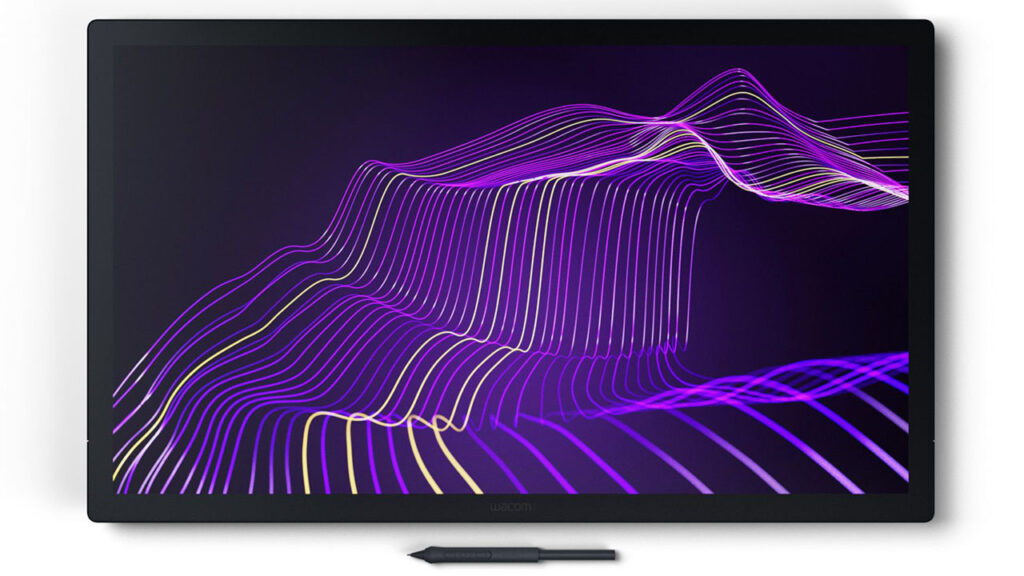
As a creative and an artist, getting access to high-quality drawing tablets can be a gamechanger.
It elevates the drawing experience and the results are equally stunning. With the Wacom Cintiq Pro 27, users get access to a high-end and comprehensive 120Hz, 4K pen display tablet that’s designed to change the way creatives handle their workflow.
What stands out with this model is the sleek design with slim bezel and individual mounting options for comfortable user experience. Also, the tablet is paired with Wacom Pro Pen, which enables users to have a comfortable drawing experience with 8,192 levels of pressure sensitivity and 3 side switches.
Coming to the display of this drawing tablet, it features an extensive 27” LCD panel with 10bit color for crisp and clear visuals. The adaptability that you get to experience with the Cintiq Pro 27 is beyond imagination. The clean interface simplifies the overall creative experience like never before.
Wacom is also dedicated to ensuring sustainability, which explains why the product design materials and the packaging are made using recycled materials. Also, the tablet is integrated with a bonus software for optimal user experience.
Pros:
- Large 27-inch 4K display with excellent color accuracy
- Smooth and responsive pen performance
- Built-in stand with adjustable angles
- Programmable ExpressKeys for quick access to shortcuts
Cons:
- High price tag
- Requires a powerful computer to run smoothly
2. Huion Kamvas Pro 19

When talking about the best drawing tablets with display in the market, the Huion Kamvas Pro 19 undoubtedly deserves a mention.
This 18.9” UHD tablet is premium, portable and versatile and backed with the Huion PenTech 4.0 technology to support all your creative needs.
Despite the 18” size, what’s great about the Kamvas Pro 19 is how lightweight it is. Carrying it around is seamless and it fits right inside your carry on as well. Also, the 4K display ensures that you never have to compromise on the viewing experience ever again in the future.
With the Huion PenTech 4.0 technology, the users get to bring their artistic flair on the screen with seamless drawing experience. The pen offers precise pressure sensitivity for an impressive drawing and writing experience.
Huion has also paid close attention to the individual design elements, ensuring that the tablet is artist friendly, especially with elements like blind-mate ports, reverse charging, VESA mount capability, built-in stand, to name a few.
Pros:
- Large, high-quality display
- Tilt support
- Battery free pen
- Full-laminated 4K display
Cons:
- High price point
- Large size might not be everyone’s cup of tea
3. XP-Pen Artist Pro 16 (2nd Gen)

As an artist, you want access to the best and the XP-Pen Artist Pro 16 (2nd Gen) is the world’s first drawing tablet that support 16K pressure levels for a realistic and smooth drawing and writing experience in real-time.
The drawing tablet has been designed in collaboration with Shan Jiang, which explains why it is such a popular model among advanced and beginner artists in the space. The tablet is paired with the powerful X3 Pro Smart Chip Stylus, which is the industry-first with 16K pressure levels sensitivity.
Also, the 16” simulation X-nature display produces life-like colors without leaving out any of the details. As for the design and ergonomics, the tablet features a built-in foldable stand for comfortable typing and drawing experience too.
The futuristic streamlined design is where things have shifted for this drawing tablet because it blends tech and art seamlessly. Furthermore, the display is TÜV SÜD certified to protect your vision as you spend hours at end with your creativity.
Pros:
- Large 16-inch 2K display with 16:10 aspect ratio
- Good color accuracy
- Sturdy and well-built
- Affordable price point
Cons:
- Drivers can be buggy
- Lower resolution than some competitors
4. Wacom One 13 Touch

Finding a good-quality and reasonably priced drawing tablet with a display would not be as challenging if you are aware of Wacom One 13 touch.
This compact and versatile tablet is perfect for creatives that are just starting out and need a professional device as a back-up.
You can draw and edit your images and videos using the ergonomically designed battery-free pen, which is what transforms the overall user experience for the better. It is compatible with Android, PC and Mac, so your creativity will not have to be limited to one tech space.
The 13.3” display is responsive and portable, making it perfect for artists and creatives that are constantly on the move and need a device to support that kind of lifestyle without any compromise. Also, it comes with a travel stand, so you can set up your workspace according to your comfort.
Furthermore, the paper-like display features natural friction with minimal reflection so it feels like you’re actually drawing on a piece of paper. The connectivity options include USB-C and HDMI-3 ports, which is a bonus.
Pros:
- Affordable price point
- Large yet portable design
- Great for beginners
- Wide compatibility
Cons:
- Lacks express keys
- Limited color gamut
5. XP-Pen Artist 22 Plus

Your big ideas can be brought to use using XP-Pen Artist 22 Plus and if you are worried where to get started, this drawing tablet is the perfect option to keep you company.
Featuring a 21.5” expansive display, the drawing tablet is primarily designed for advanced creators.
Paired with the X3 Pro Smart Chip Stylus, the combination of the two enables you to bring all your creative ideas into life on the digital canvas. The stylus also features the world’s first 16K pressure sensitivity that helps you bring out the best in you.
What’s creative about the device’s display is that it features a fully-laminated screen with 130% sRGB native color space to render bright and vivid color accuracy. Also, the tablet is integrated with USB-C and HDMI, which enables smooth connectivity and data transfer.
As for the design, it features the X-Inspo display, which is a slim and sleek yet classy and ergonomic design to support every artist’s creative endeavor with class and precision.
Pros:
- High resolution display
- 16,000 pressure levels
- Battery free pen
- Programmable buttons and adjustable stand
Cons:
- Plastic surface makes it scratch prone
- No tilt sensitivity
6. Huion Kamvas 13

Are you looking for a more comfortable and premium drawing experience? If yes, the Huion Kamvas 13 is just what you need.
It is available in three stylish color variants – Violet Purple, Midnight Green and Cosmo Black, enabling you to pick what you like.
What’s great about this drawing tablet is the design and portability, given that it only weighs 980 g and is 11.8 mm slim. So, if you are one of those artists that’s constantly on the go, this is the device that you need to keep yourself creative.
The tablet also supports multiple connectivity options, especially with Type-C to HDMI connection and Type-C to Type-C connection for seamless connections. The vibrant visuals with brilliant color rendition also make this device a worthy option for creators.
Further elaborating on the display, it features a full HD IPS display with 178 degree viewing angle and 120% sRGB color gamut to bring brighter visuals to life. Also, the tablet features fully laminated display, which eliminates the parallax.
Pros:
- Seamless drawing experience
- Quite affordable price tag
- Portable design
- Decent color gamut
Cons:
- Lower resolution
- Plastic build
7. Wacom Cintiq 16
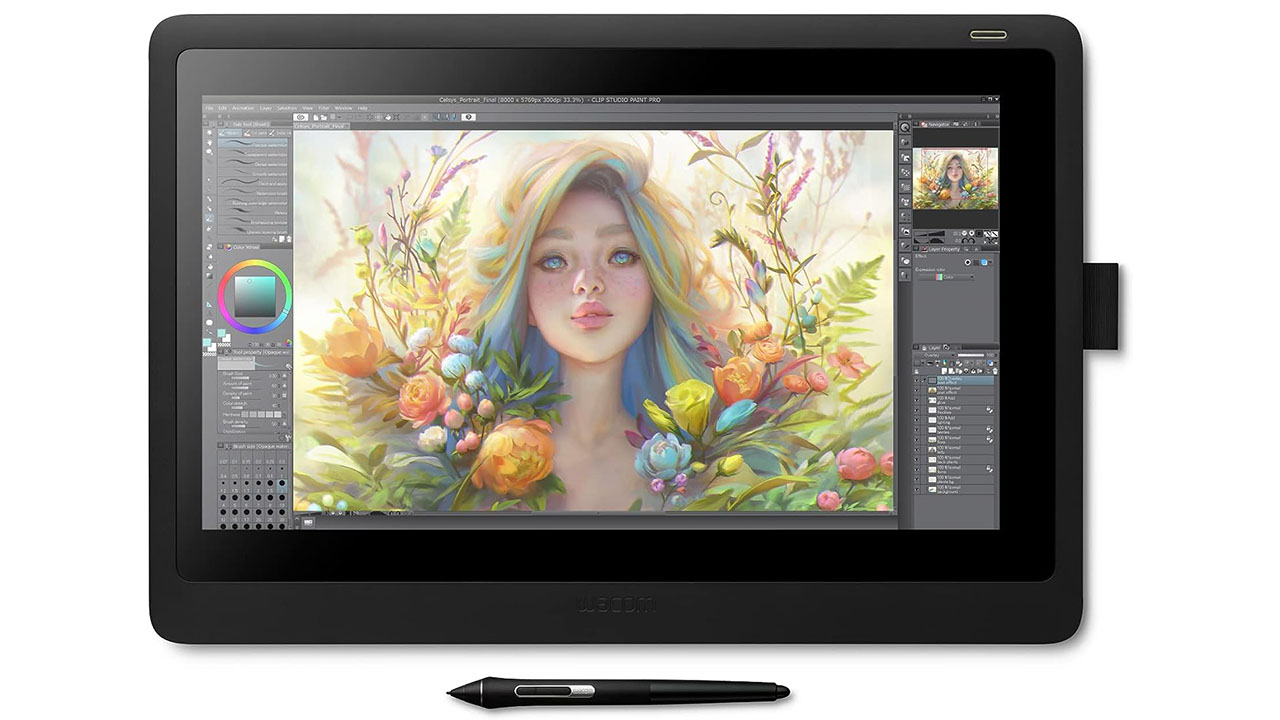
With 15.6-inch screen size, Cintiq 16 still stands at the top as the best drawing tablet with screen.
It has a Full HD (1920 x 1080) IPS display with 210 cd/m2 brightness and 72% NTSC (96% sRGB). The dimensions of tablet are 16.6 x 11.2 x 1.0 inch and weighs 1.9kg without stand.
Cintiq 16 comes with Wacom Pro Pen 2 that has 8192 levels of pressure levels, 60 degrees of tilt support, 5080 LPI resolution and 2 side switches. The tablet has 3-in-1 cable port (1.8m is included) and is compatible with Windows 7 or later and macOS X 10.12 or later.
Pros:
- Battery-free stylus
- No lag
Cons:
- Low resolution (No 4K)
- No press keys
8. XP-Pen Artist 13.3 Pro
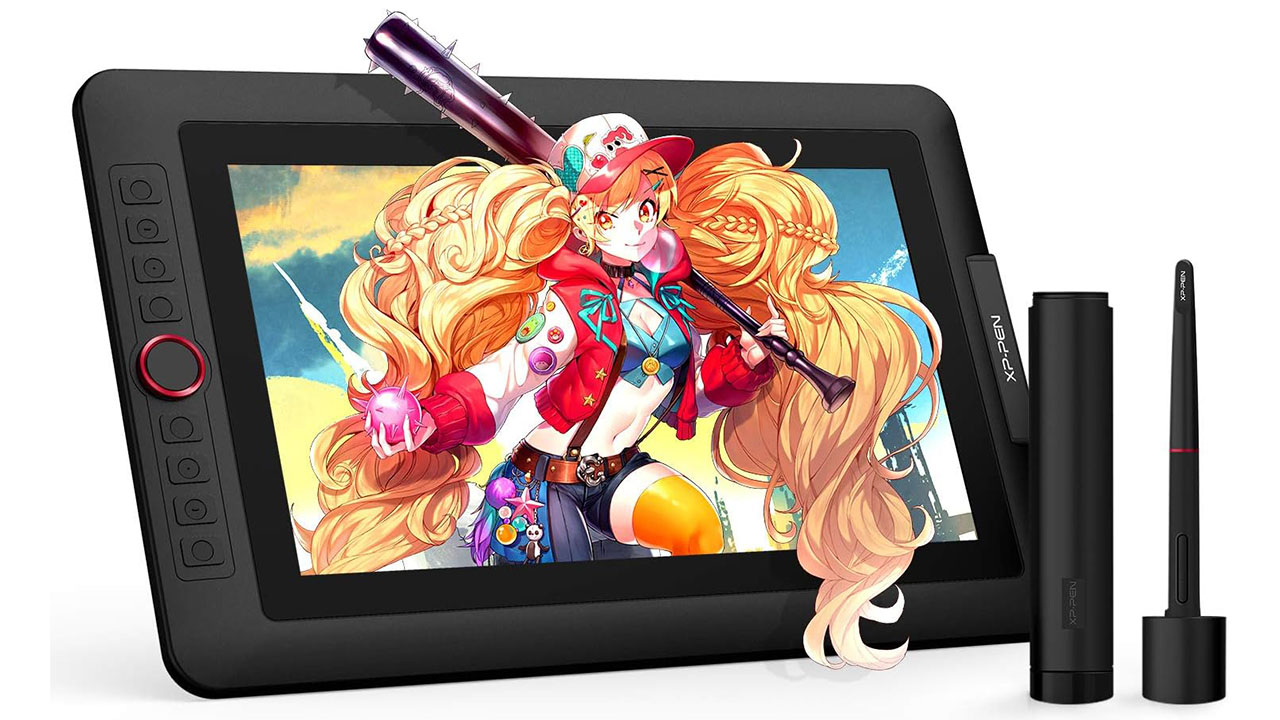
One of the best-selling graphics tablet on amazon, Artist 13.3 Pro comes with 8 shortcut keys and 1 roller wheel.
The working area (screen size) of the tablet is 11.6 x 6.5 inch with 1920 x 1080 pixels FHD resolution and 88% NTSC (91% Adobe RGB, 123% sRGB).
The battery-free PA2 stylus comes with 8192 levels of pressure sensitivity, 5080 LPI resolution and supports 60 degrees of tilt. One of the best part of Artist 13.3 Pro is it’s compatibility with Chrome OS and Linux along with Windows and macOS.
Pros:
- Fully-laminated FHD display
- Affordable
- Color Gamut: 88% NTSC
- OS compatibility
Cons:
- Needs 3 ports on PC for connection
9. Huion Kamvas Pro 16 (2.5K)
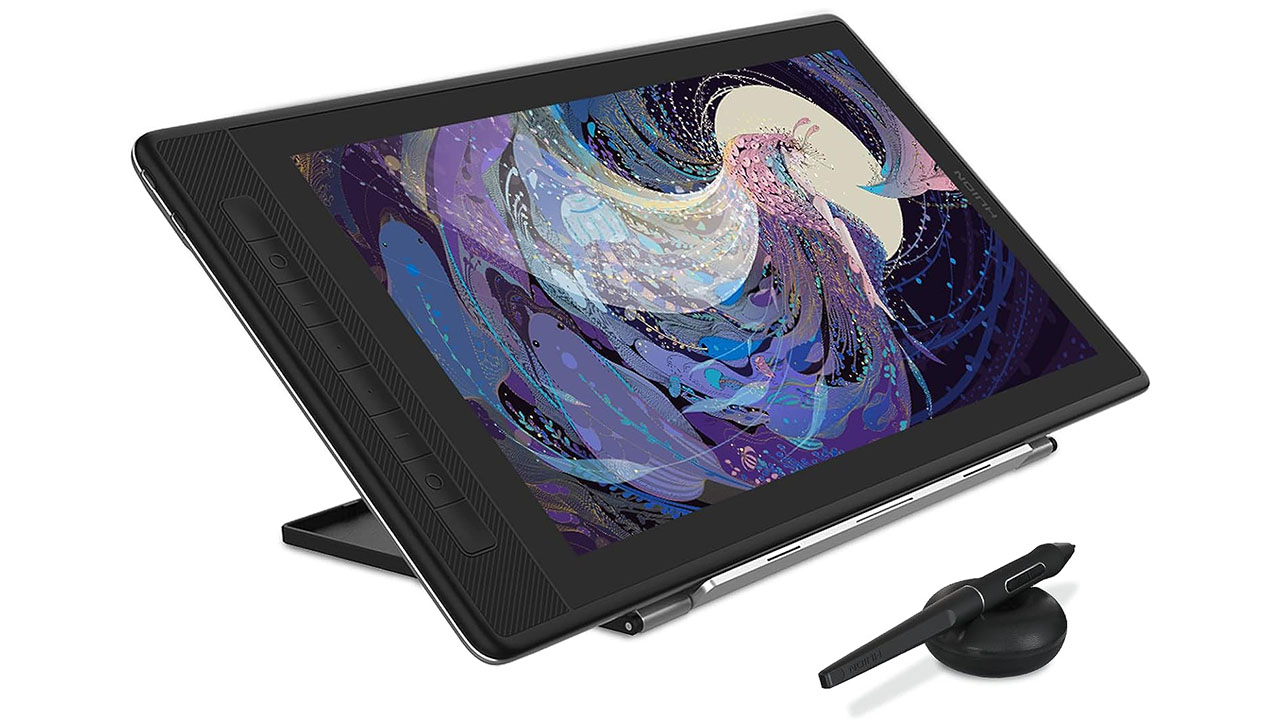
With 2.5K QHD (2560 x 1440) resolution 15.8-inch IPS screen, Kamvas Pro 16 (2.5K) is a perfect pen display tablet for digital artists and graphic designers.
It comes with 8 programmable press keys and ST200 foldable stand.
The battery-free PW517 comes with 8192 levels of pressure sensitivity, 5080LPI resolution, 10mm sensing height and ±60° tilt support.
You can connect tablet with a desktop PC via three-in-two cable and laptop, tablet or phone via USB-C cable. Kamvas Pro 16 is compatible with Windows, macOS, Linux and Android devices.
Pros:
- QHD display resolution
- USB-C connection
- Affordable
Cons:
- USB-C plus power connection is also required
10. Xencelabs Pen Display 24
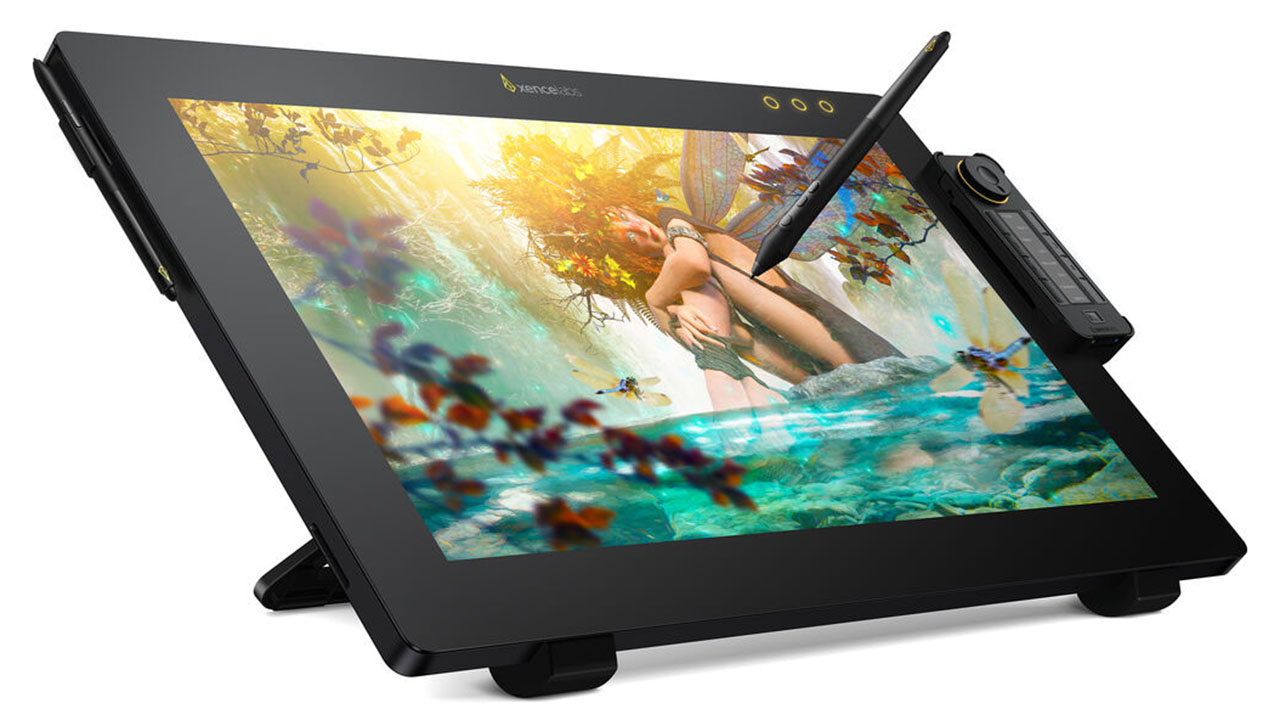
A tablet for studio quality drawing experience, Xencelabs’s Pen Display 4 comes with a 4K UHD Pantone and SkinTone validated display.
Perfect for professionals, this tablet has active working area (screen size) of 20.75 x 11.7 inch with 330cd/m2 brightness.
One of the most unique part of Pen Display 24 is that it comes with 2 pens – 3-button pen v2 + eraser and Thin pen v2 + eraser. The pen pressure is of 8192 levels, resolution of 5080LPI and a tilt support of 60 degrees.
Pros:
- Pantone validated display
- Quick Keys
- 2 Pens
Cons:
- Pricey
11. Gaomon PD1161
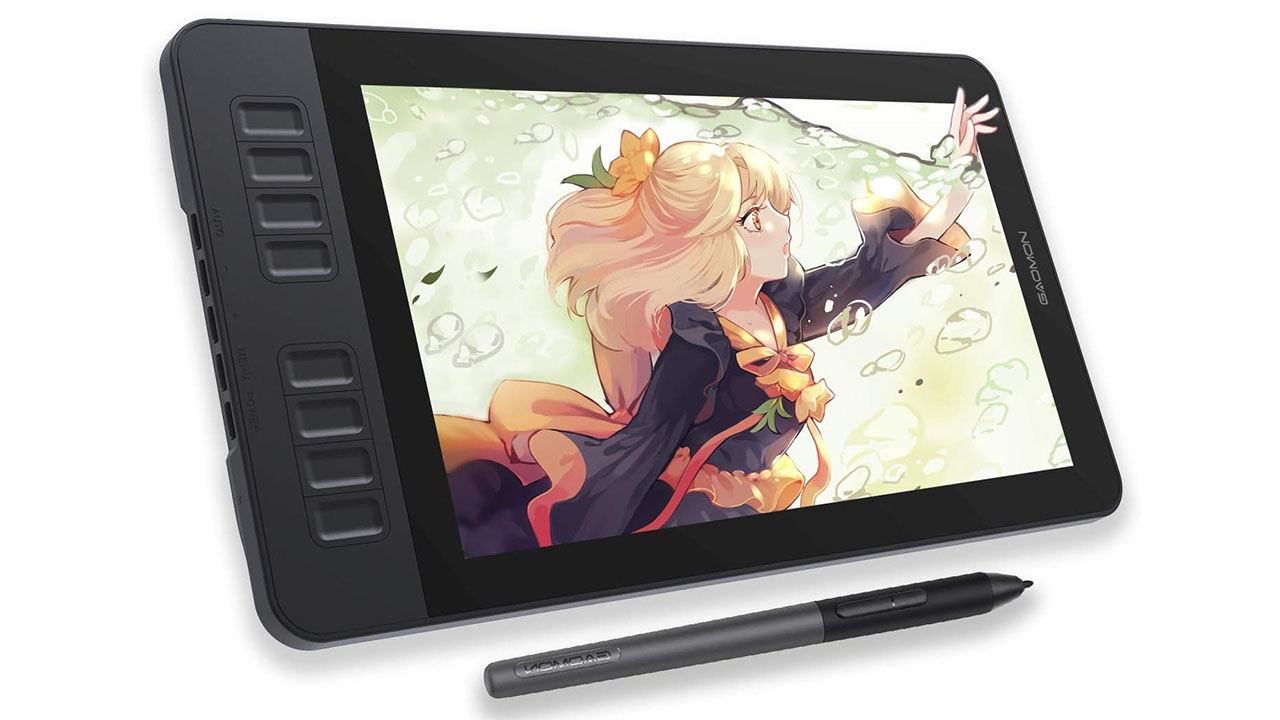
Gaomon PD1161, the portable pen display tablet with 11.6-inch screen, is perfect for roaming artists.
The tablet comes with a FHD (1920 x 1080) display resolution, 72% NTSC color gamut and 220cd/m2 brightness.
The stylus with battery-free electromagnetic resonance pen technology has a good pen resolution of 5080LPI (greater than Wacom One), 8192 pressure levels, ±60° tilt and report rate ≥ 266PPS. You will get a pen display, AP50 digital box, 3-in-2 cable, pen holder, 8 x pen nibs, power adapter and a quick start guide in the box.
Pros:
- Best value
- FHD resolution
- Portable
Cons:
- Tricky connection
Conclusion
Choosing the best drawing tablet with screen is a bit tricky task as there are lots of options available in the market with the same display sizes in different brands. For example, if we just talk about Huion then there are more than 4 16-inch Huion pen displays. So, we have shortlisted some of the top best drawing tablets with screen above.
Cintiq 16 is the best overall drawing tablet with screen for almost all types of artists and graphic designers. Xencelabs Pen Display 24 is a pricey tablet and is perfect for professional graphic designers while Huion, xp-pen and Gaomon tablets are affordable ones and hence are perfect for good artists as well as beginners.

Thank you. This helped me a lot in terms of how I will decide on my ultimate purchase.
Got the Artist Pro 16 model from xp-pen and till now I m quite impressed
A good alternative to wacom cintiq.
Holloo.
Is there any recommendations for a standalone tablet to use with sketchbook pro, fusion 360 and note taking with a stylus?
Thank you!!
Sketchbook Pro is available for Mac and Windows PC while Sketchbook is for iOS and Android devices. So, if you want to use Sketchbook Pro, you can go with Wacom MobileStudio Pro or Huion Kamvas Studio 22. And for Sketchbook, you can choose from any of the Standalone tablets listed here.
Looking for an entry level drawing tablet for my son who is very interested in his art. Any recommendations would be a great help. He showed me the Huion Kamvas Pro 20 (2019) but this might be overkill on size and cost. The Huion Kamvas 16 in your review looks good.
Hello Kevin,
If he is just starting with the digital art, you should get him a pen tablet instead of pen display. Once he get his hands on art, you can get him a pen display. You can get a good entry level Pen tablet for around $50-$100.
We are looking for a tablet to be used with a laptop for classes, we would like to be able to project work and write on it. Any suggestions?
I have the Wacom 27 Pro and it is definitely not worth the cost. Additionally, the poor resolution and limited color range makes it difficult to work with. I would put the value of this screen to 1500 at best…but that will still not address the low resolution issue.